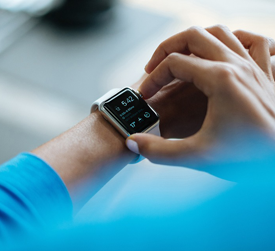Global Scans · Wearables · Weekly Summary

- The convergence of VR, AR, and AI will lead to seamless, personalized digital interactions, with lightweight wearable devices potentially replacing smartphones as primary interfaces by the end of the decade. The Chronicle-Journal
- From wearable electronic glasses to stationary magnifiers, electronic vision technology is reshaping the future of visual accessibility, offering hope and independence to millions affected by low vision worldwide. buzblog.co.uk
- Wearable tech in the U.S. reached $23.07 billion in 2024 and is expected to double to $47.51 billion by 2030. Accretive Edge - Driving Healthcare Growth
- A non-drug, wearable device can help people with substance use disorders manage stress, reduce cravings, and lower their risk of relapse in real time. Harvard Gazette
- Smartwatches: The segment of wearable medical devices is led by smartwatches, which are valued at $33.58 billion in 2024, with a forecast to grow to $105.20 billion by 2032. AI Software Development & Custom AI Solutions for Busin
- North America houses several large CGM players that will continue to innovate in AI-enabled, wearable, and app-based non-invasive technology. Research Nester
- The increasing rates of diabetes in various European countries and the U.S. are expected to boost the demand for clinical wearable medical devices, such as connected insulin pumps and glucose monitoring systems. Yahoo Finance
- Snap Inc. has recently announced that it will launch a new version of its Spectacles wearable device, called Specs, in 2026. Auganix.org
- In a world where wearable tech is rapidly evolving, tattoos could provide more accurate real-time health data than any smartwatch. Le Ravi
- OpenAI's mysterious wearable third-core AI device could be followed by a suite of other Jony Ive-designed and AI-based devices, including a smart speaker with a display, a voice recorder and a pair of smart glasses. Yahoo Tech
Last updated: 27 October 2025
